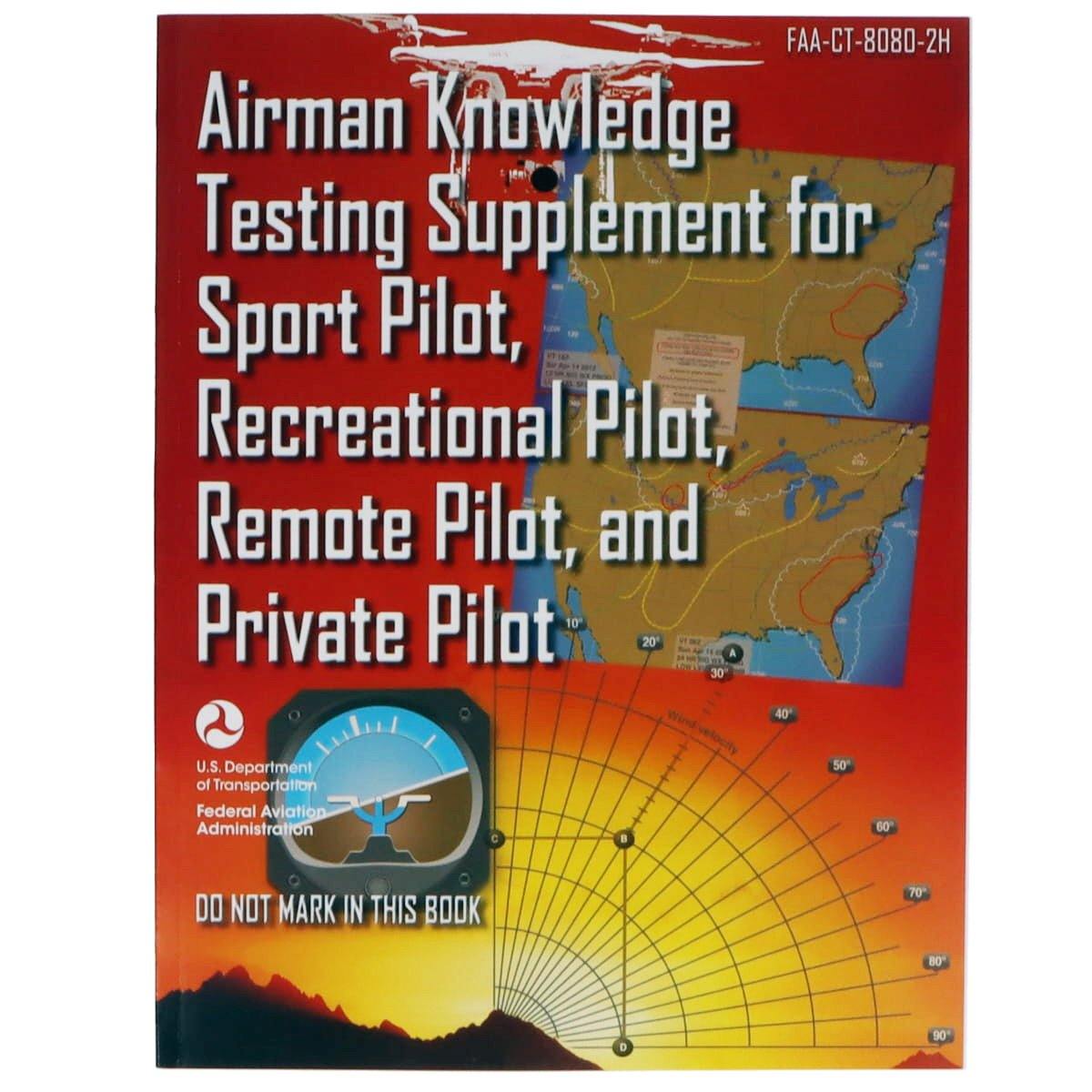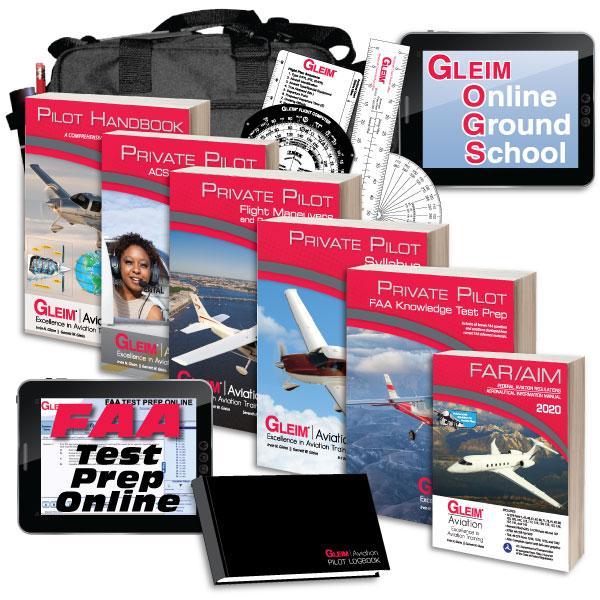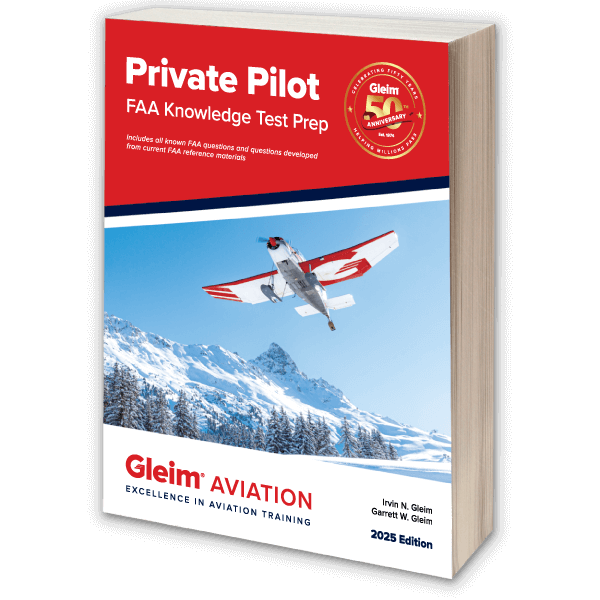You've been looking up in the skies, dreaming of soaring above the clouds ever since you were a little one. Now that you're grown up and ready to make your dreams a reality through obtaining a pilot's license, but you're probably asking yourself, “How hard is it to fly a plane?” You’re probably looking for a realistic idea of whether you have what it takes to make it through the training and to master the skills you need to take to the air.
Today we will answer your questions so you can be prepared and make the best decision for you. Ready to find out if a pilot’s license may be in your future?
Let’s get started!
Table of Contents
 Expectations
Expectations
First off, it’s important to understand up front that there is no simple, universal, fixed answer to hard it is to fly a plane. There are certain variables that do impact the inherent difficulty of flying a plane, but each pilot’s perception and experience level also factor into the answer.
A beginner pilot will probably be more likely to tell you that flying a plane is hard. A seasoned career pilot may tell you that it is easy. Then again, a beginner private pilot who flies in and out of small local airports might say that it is easier than a commercial airliner pilot navigating massive terminals and crowded commercial airspace.
That said, we will talk about some of the factors that come into play with the perceived difficulty of flying a plane. This will let you know what to expect, and you will see how your own answer to this question is likely to change over time and with different circumstances.
 Stages of Learning
Stages of Learning
Like many other skills, learning to fly a plane will take you through the 4 stages of learning. Your perception of how hard it is to fly a plane will change throughout each of these stages. Let’s look at what to expect on this journey.
Stage 1: Unconscious Incompetence
Before we ever step foot into a cockpit or flight school, we are at stage 1 of the learning process. At this point, we “don’t know what we don’t know.” Yes, we realize to some extent that we don’t yet have the skills and knowledge to pilot an aircraft, but we aren’t fully aware of the specifics of our deficiencies and skill gaps.
We may be overconfident in our innate abilities and think that this won’t be that challenging to learn. At this stage, our blissfully optimistic selves are liable to say that flying a plane is not too hard.
Stage 2: Conscious Incompetence
We go on our first training flight and open our first reference books. As we start to learn more, we also begin to realize just how little we truly know. We develop an uncomfortable understanding that there are specific skills and knowledge which we are lacking in.
As we become painfully aware that we have a lot to learn, our confidence level may drop. “How hard is it to fly a plane?” Right now, it seems uncomfortably and perhaps insurmountably hard.
Stage 3: Conscious Competence
As we near the end of our flight training, as we pass our written test, and as we start making solo flights, we will have learned the materials and mastered the skills that we need to fly a plane.
It still takes all of our attention, effort, and concentration, but when we consciously focus on executing the skills, we are in fact competent.
Expect to be at this stage when you take your checkride and get your pilot’s license. If you ask us at this point how hard it is to fly a plane, we may still say that it is somewhat hard, but we will also be confident in our abilities.
Stage 4: Unconscious Competence
The final stage of learning – a sort of Holy Grail – is one that not everyone achieves on all aspects of piloting. Unconscious competence is reserved for those skills that you have trained on, practiced and executed so many times that you are able to do them reflexively without thinking.
The skill that you initially didn’t even know you needed to learn has been not only learned, but it has been polished to such an extent that it becomes almost like a habit. It comes naturally and effortlessly. In those moments, flying a plane is easy.
By the time you achieve unconscious competence, you may almost forget the complexities of all the skills you are performing and the knowledge you are drawing on. It isn’t that flying a plane actually got easier. You simply became more skilled, so you perceive it to be easier.
 Other Factors
Other Factors
We already talked about how your level of training and experience impact your perception of how hard it is to fly a plane. Now we will get into how the conditions and parameters of each individual flight play a role in the challenge or ease of piloting that flight.
You could conceivably have a flight one day and say that flying the plane was easy, then have another flight the next day and say that flying the plane was hard.
In theory, you have roughly the same experience level from one day to the next, so what would cause the change in your perception of the difficulty level of flying the aircraft? The answer? The flight conditions.
The type of plane that you are flying, the weather, the flight plan and airport – all of these factors and more come into play when determining how hard it is to fly a plane.
Type of Plane
The most common student pilot “trainer” aircraft have specific flight characteristics that make them easier to fly. They are generally smoother to handle, have a greater degree of stability and are more forgiving of pilot errors.
Look for aircraft like the Cessna 150 and 152, the Piper Pa-28 Cherokee, and the most popular, most produced aircraft: the Cessna 172. When you make the move from one of these aircraft to an aircraft with more demanding flight characteristics, that new aircraft will seem harder to fly.
 Weather
Weather
When an aspiring young pilot took to Yahoo answers to ask, “How hard is it to learn to fly a plane?”, the favorite response came from lludwig39 who said in part:
This pretty much sums it up. Flying a plane in clear, calm, ideal weather is much easier than flying in turbulent, low-visibility, high crosswind conditions.
If you judge the difficulty level based on optimal weather conditions, then it is much easier. Add in a hefty dose of unfavorable weather, and flying a plane is much harder.
Flight Characteristics
There is a common pilot saying that “altitude is safety.” If you were to take over the controls while a plane is at cruising altitude, flying would seem pretty easy.
You could easily learn how to maintain the heading, altitude and speed, plus you would know that you have plenty of room below you in which to deal with any potential problems.
It would be relatively low stress. Take over at a lower altitude where there is more going on and you have less time and space to react, and the stress level will be higher. You are likely to say that flying a plane is harder at this low altitude.
Another factor is whether your flight takes you through congested airspace and to large, complex airports or if it stays in quiet, open airspace surrounding a small, easy to navigate local airport. Clearly this too plays a role in how hard your piloting experience will be.
 What makes learning to fly a plane harder than learning other skills?
What makes learning to fly a plane harder than learning other skills?
If you frequent enough internet sites and piloting forums, you will inevitably come across a pilot who assures would-be aviators that learning to fly is as simple as learning to drive a car.
This and other similar comments may be well intentioned advice designed to ease your mind, but you would do well to realize that flying a plane brings into play a couple of very important extra variables that are completely different from driving a car or learning other skillsets.
Interacting with and mastering the third dimension
When you learned how to drive a car, you were responsible for operating in two dimensions. You learned how to move the car forward/backward and left/right.
You learned to put your car in the appropriate gear, then use your right foot to press either the gas or the brake pedal as needed to control the velocity of the car and determine the speed with which you would impact an unlucky nearby motorist or pedestrian.
Your instructor drilled you on keeping your hands placed neatly at “ten and two” on the steering wheel. It was pretty intuitive to grasp that by turning that wheel to the left, your car would turn left and by turning to the right, the car would turn right. Tada – you passed your test and proved that you had mastered linear movement. Not too hard, right?
The difference with flying a plane is that now you are also responsible for mastering movement in the vertical dimension. To put it another way, you have been moving on the X and Y axes.
Now you must also simultaneously navigate the Z axis. Like learning how to juggle, this extra “ball,” increases the challenge and difficulty level. You must keep all three of these balls in the air at the same time, or the consequences could be catastrophic.
Limited margin for error
As much as we may wish for it, none of us are born already having mastery of all the skills we want and need to get us through life. We have to learn skills as basic as rolling over, sitting up, crawling and walking. Our parents teach us how to tie our shoes and a teacher guides us through learning how to read and write.
Once we have these basic survival and life skills down, many of us branch out into more fun topics like sports, music, crafts or hobbies. For all of these, we must invest time and effort to go from a neophyte level skillset to achieving competency.
Here's the thing: most of the time, the skills that we are learning aren’t life and death. We have ample margin for error because even if we fail spectacularly, we will live to try again another day. How many times did you fall down as a baby? How many notes did you miss during that middle school clarinet recital?
Even high-level Olympic athletes who have trained intensively for over a decade can fall while attempting to land a triple axel. A kicker can miss the game winning field goal at the Super Bowl.
All of these are “failures,” yet the baby, the clarinetist, the figure skater and the football player have the benefit of being able to walk away from the situation, analyze what went wrong and hopefully try it again in the future.
The consequences of failure are embarrassment, disappointment, a lost chance at an Olympic medal or Super Bowl ring. There may be some minor injuries, but nothing catastrophic.
It isn’t like that with flying.
In answering the Quora question “What makes flying a plane so difficult?”, pilot Andrew Hennigan aptly describes the limited margin for error that exists in the cockpit.
He says in part:
As Hennigan points out, what makes flying hard is not just the learning and mastering of the list of skills and procedures needed to get your pilot’s license. Another challenge is applying your knowledge and executing those skills flawlessly every single time without fail because if you fail, you may very well die.
 What is the hardest part of flying a plane?
What is the hardest part of flying a plane?
“Okay, okay,” you say. “I understand that the difficulty level of flying a plane depends partly on my training level, experience level, the aircraft, the weather, and the flight characteristics.
I can see how adding in the third dimension and the need to perform within a very small margin of error make flying a plane harder than many other endeavors. I just have one more question. What do most pilots say is the hardest part of flying a plane?”
Ask just about any pilot, “What’s the hardest part of flying a plane?”, and the majority will emphatically tell you “landings.” Yes, all the multitasking of managing priorities in the cockpit is also a challenge, but if they had to pick a single skill that was the hardest to nail, landings would be it.
Perhaps it is no coincidence that landings are also the part of flight where the need to master the third dimension and to operate within that very narrow margin for error also come into play the most.
There is a reason that pilots only semi-jokingly like to describe a good landing as “any landing you can walk away from,” and a great landing as “one after which they can re-use the aircraft.”
A lot of variables must come together just perfectly for you to nail your landing. If your vector is off, your speed is incorrect, or you hit an unexpected crosswind, your landing is toast. The good news is, that is why your instructor will teach you about go-arounds.
Wise pilots will remind you that it is called an “approach” to landing for a reason. You line yourself up, you go through your procedures as though you are going to land, but you always consider it merely an approach. If anything is off, don’t try to force the aircraft to land.
You are better off going around than muscling through and landing a plane that isn’t set up for landing.
Landings aren’t easy, but that is what training is for. Your instructor will teach you how to land a plane and properly apply brakes. They won’t sign you off for solo flight until they are confident that you are capable of executing consistently safe landings.

-
How hard is it to fly a commercial plane?
As a pilot's skill and experience improve they will experience more ease with operating the aircraft they're rated in. -
What is the most difficult part of flying a plane?
The most difficult part of flying is not the flight portion, it's the landings. The next most difficult part of flying is safety assessments, such as resisting the urge to fly in bad weather conditions use to needing to be somewhere at a certain date or time. -
How long does it take to learn to fly a plane?
This depends on the student pilot's personal ability to comprehend the materials and to perform tasks in the aircraft with proficiency. -
Is it scary to fly on a plane for the first time?
They say fear often comes from a lack of understanding and experience. Taking a discovery flight can help to increase awareness, and understanding and alleviate fear of the unknown. -
Do you need a degree to be a pilot?
As of recently, you do not need a degree to go into the airlines, however, having a degree makes one applicant more likely to be hired than one who doesn't have a degree. A pilot will still need to meet the FAA requirements for ATP with the appropriate amount. -
What are the easiest planes to fly?
Small general aviation aircraft such as small single-engine Cessna's and Piper's tend to be easier to fly.
 Final Thoughts
Final Thoughts
Sometimes the hardest things in life are the most worthwhile. If you dream of becoming a pilot, and are holding back because you aren’t sure if you can do it, or if flying a plane is too hard for you, ask yourself why you want to do it. What drives this dream? If you have a strong enough why, it will give you the courage to push through and learn everything you need to know to become a pilot.
One day when someone asks you, “How hard is it to fly a plane?”, you will be able to simply smile and say, “Landings can be a bit tough, but it’s really not that hard if you have the drive, passion and dedication to learn.”

![How Hard Is It To Fly a Plane? [Learn and Understand the Essentials]](http://www.pilotmall.com/cdn/shop/articles/7ee13894ccde5f90cada8252784cdf3e.jpg?v=1715243211&width=850)








2 comments
Craig Williams
Because I have always had the determination to become a pilot it was very “easy” for me to begin my journey to become a commercial pilot. Maybe this will help your decision. Any skill can be learned with the right mindset. The flight instructor will guide you through the basics. While you are a student pilot, be sure to FOCUS on the task at hand. If you get a “block” landing, your flight instructor will assist you in that endeavor.
Greta James
Thanks for pointing out that an instructor will not sign you off for solo flight until you can land an aircraft consistently. My husband has his private pilot’s license, but it has been over a year since he flew. He needs to find a new plane to fly, and probably get some training to help him to refresh his skills. http://rwrpilottraining.com/initial-pilot-training.html